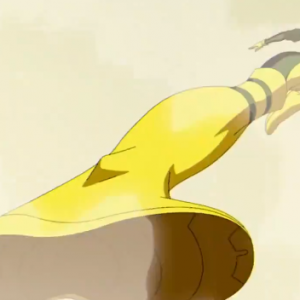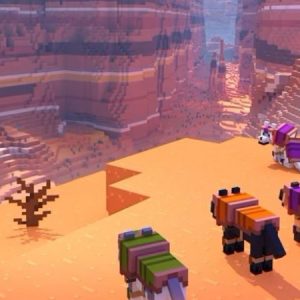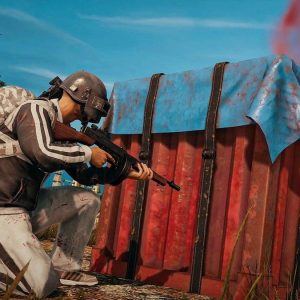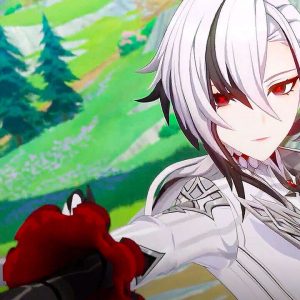If you haven’t played Outbreak, you’re not alone. Originally released in 2003 in Japan for the PlayStation 2, Resident Evil Outbreak was Capcom’s foray into an online multiplayer experience – not something the Resident Evil series is known for – after series’ director Shinji Mikami expressed interest in the new technology. Outbreak was originally conceived prior to the release of Resident Evil 2 and included a mini-game where players had to survive as long as possible. Ultimately, however, early testing showed that players were not encouraged to work together as a team to stay alive, and would instead run away and try to defend themselves individually. The team felt what fundamentally made Resident Evil scary was actually that sense of being alone. Because of this reasoning, development for the game was put on hold until it was resurrected prior to 2002, although it was headed by a different studio at Capcom – Production Studio 1, who previously had no experience working on the Resident Evil franchise of games.

During Sony’s E3 press conference in 2002, Capcom revealed Outbreak footage for the first time, highlighting its new graphics engine which allowed for full-3D backgrounds, as opposed to the pre-rendered backgrounds found in the first two Resident Evil games. It also introduced four of the eight playable characters as well as the “Ad-lib” system – a rudimentary communication system that allowed players to communicate without the use of voice chat. This effectively allowed you to choose from a number of pre-recorded phrases and text that allowed you to vaguely communicate with other players online, as well as AI characters. Some phrases included, “Help”, “Wait”, “Come on”, and “Thank you.” What’s interesting, though, is that phrases were unique to whichever character you selected, and certain characters interacted differently with others. In all, there were ten different Ad-lib commands you could use.
Although Resident Evil Outbreak could be played single-player, it was designed for a cooperative environment online. Instead of a cohesive narrative experience, it was broken up into five “scenarios,” which can be thought of as simple one-off missions. These scenarios can be played in any order, as they take place at different points in the story, and during each one you’re given a list of tasks to complete either solo or with up to three other players. Completing all the requirements unlocks Infinity Mode, allowing you to play through the scenario with unbreakable weapons and unlimited ammo. The game takes place just a couple days after the initial outbreak in Raccoon City.

Outbreak was a game that was definitely ahead of its time, but it didn’t lack its faults. IGN’s review of the game calls attention to the game’s communication system – or lack thereof – saying, “in this modern technological climate where keyboards and voice chat unite gamers the world over in various platforms, this pseudo-sign language bit just doesn’t seem to stack up.” Not to mention, a game that revolved around online features and functionality never received online support in Europe, leaving an entire segment of players isolated from the rest of the world. Outbreak was not a raging critical success, receiving average reviews (currently sitting at a 71 on Metacritic) and selling just 1.45 million copies worldwide. That being said, it’s become a bit of a cult classic hit amongst fans of the Resident Evil franchise, with a group of dedicated advocates coming together almost a decade after the game released to create a custom server that allowed the game to live on after official servers were taken down in 2007 in the US and 2011 in Japan. The fan-made server is still active today if you’re looking to take a trip down memory lane, or experience the game for the first time.

As far as the five fragmented scenarios go, here is a brief synopsis of each to get you caught up on the events in Outbreak:
Outbreak – Zombies have attacked J’s Bar and players work with the help of Officer Raymond Douglas to hold off the horde. They flee to the rooftop, jump to the neighboring building, and escape down the elevator shaft. They flee in an armored van driven by a Raccoon City police officer before ultimately assembling a bomb that goes off on Main Street, eliminating all zombies in that area.
Below Freezing Point – One of the game’s playable characters, Yoko, has her I.D. card stolen by an Umbrella Corporation researcher named Monica who flees into the research facility. Players pursue her up a ventilation shaft, but are met with a rather cold complication – everything in the facility has been encased in ice. After finding a blowtorch and melting away the ice over a switch, the facility is thawed out, but in doing so reveals a group of frozen hunters that players must fight off. They locate Monica, who has collapsed onto the floor. At this point, her chest bursts open to reveal a G-Larvae that escapes and grows into a giant “G” before eventually being taken down by the players.
The Hive – Players begin by entering the Raccoon General Hospital – the same hospital featured in Resident Evil 3: Nemesis. They meet Dr. Hursh, an associate of George, one of the game’s playable characters. Dr. Hursh has opted to stay behind during the outbreak to treat sick patients. After some time, he tells the group that the hospital is no longer a safe place to stay, and urges them to leave, but the elevator is broken. Dr. Hursh attempts to restore power to the elevator, but is attacked by a group of leeches that have infected a human body, creating a walking mass of leeches known as the “Leech Man.” The players end up fighting an amalgamation of leeches that now include Dr. Hursh himself in the Fixed Temperature Laboratory. The scenario ends with players fleeing into the sewers and facing off against the Giant Leech.
Hellfire – The scenario opens with two Raccoon City Fire Department firefighters, Charlie and Len, who have entered the Apple Inn to evacuate any survivors. Upon inspecting the boiler room area below the hotel, there is a massive explosion that sets the entire Apple Inn ablaze. The players are trapped inside and must fight zombies, lickers, and more as they try to escape. In the hotel’s lobby, they encounter a Suspen-dead, an infected female licker that retains more of a humanoid form. After finishing off the Suspen-dead, they are rescued by a firefighter who breaks down the front door.
Decisions, Decisions – After George receives a note from his friend Peter requesting assistance, he leads the group of survivors to the university where he is located. Upon arrival, Peter is dead due to a gunshot wound to his back. The group finds out he was working on a vaccine called “Daylight” which was intended to remove the t-Virus completely. The group splits up to locate the components required to recreate the Daylight vaccine. The first piece must be obtained from Thanatos, an experimental Tyrant created by an Umbrella scientist. The group temporarily stuns him, and are able to retrieve the T-blood sample. They also retrieve a sample of V-poison, the second required component, from the emission tower. The third and final piece needed is the P-base, a sample of the Progenitor virus that was derived from the original t-Virus. After they recreate the Daylight vaccine, they attempt to flee by helicopter, but are met once again by Thanatos, who has mutated into a Super Tyrant. Working together, they successfully take down the mutant and escape with the newly synthesized vaccine in-hand.

Resident Evil Outbreak was followed up a year later by Resident Evil Outbreak: File #2, an expansion to the original game that added five more scenarios. Again, these scenarios can be played in any order, but directly follow the events from the first game. The gameplay and graphics were generally the same, although the ability to strafe and shoot were added, as well as reduced load times.
It’s unknown at this point what type of game Project Resistance is going to be, but based on some leaked images, it appears to feature four players. The game could be a direct sequel to Resident Evil Outbreak, pitting up to four players against zombies and other mutations in a series of standalone missions. The most obvious comparison for potential gameplay would be the recent World War Z, which features class-based characters who must work together to progress through missions. Another possible style of gameplay could be an asymmetrical multiplayer game like Dead by Daylight or Evolve, with players working together as a team against a single player-controlled enemy.
In today’s games-as-a-service environment, there are so many ways Project Resistance could deliver classic Resident Evil gameplay in an ever-changing world full of players. Another interesting idea could be a loot-based third person game a la Destiny or The Division that include interconnected missions that tie into an overall narrative, culminating in raid-like events that feature a giant mutated enemy that requires precision and puzzle-solving. Players could upgrade their weapons and customize their characters in any way they see fit. There could even be cosmetic upgrades that feature some of the series’ most iconic characters.
Capcom will debut the teaser trailer for Project Resistance on September 9th at 8:00 AM PST. What direction would you like to see the Resident Evil series potentially go in? Let us know in the comments below.
Matthew Adler is a freelance journalist who typically doesn’t like scary games, but might feel better about it if he’s accompanied by his closest friends. You can be his friend on Twitter if you’d like to by following him at @matthewadler.























